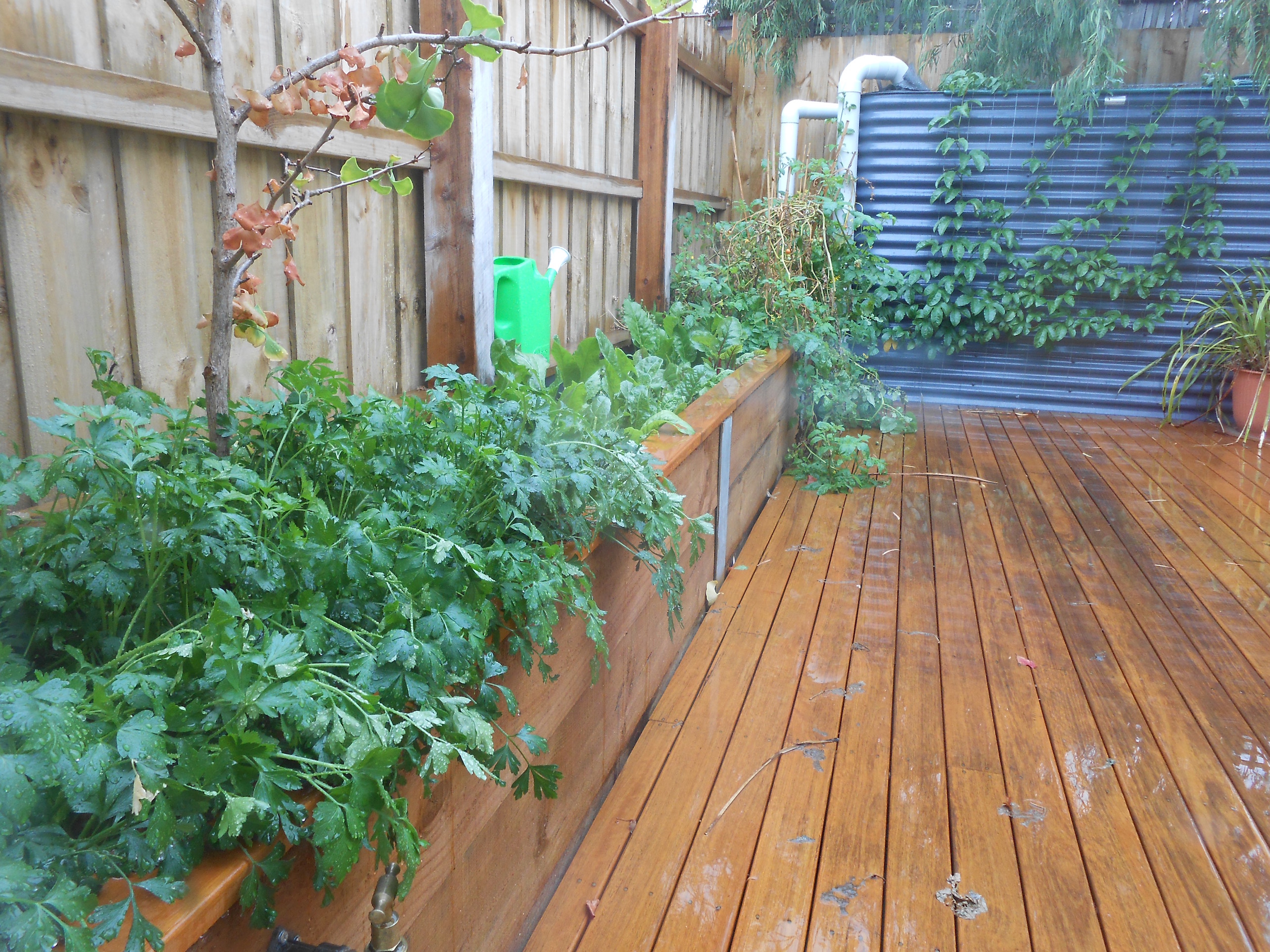In today’s update of my raingarden diary, I report on deliberately increasing our demand for water from our rainwater tank (by disabling the half-flush option on our toilets).
Our increase in demand from  our tank by 20–25 L a day might seem to go against everything our water authorities tell us about conserving water. But increasing our demand by a little each day should make our raingarden and tank system perform better (doing the Yarra River more of a favour), with negligible effect on our usage of mains water. If we are going to start reducing our urban stormwater impacts on our rivers and streams we are going to have to move beyond our single-minded focus on reducing our usage of water. The trick is to maximise our use of stormwater, and minimise our use of water from our mains supply.
our tank by 20–25 L a day might seem to go against everything our water authorities tell us about conserving water. But increasing our demand by a little each day should make our raingarden and tank system perform better (doing the Yarra River more of a favour), with negligible effect on our usage of mains water. If we are going to start reducing our urban stormwater impacts on our rivers and streams we are going to have to move beyond our single-minded focus on reducing our usage of water. The trick is to maximise our use of stormwater, and minimise our use of water from our mains supply.
Effective stormwater management for stream protection, for water supply augmentation, for urban greening and cooling, requires us to find new demands for the excess stormwater our cities generate. I’ve written a lot that riffs on this theme. Here are a couple of examples.
Walsh, C. J., Fletcher, T. D., and Burns, M. J. (2012). Urban stormwater runoff: a new class of environmental flow problem. PLoS ONE, 7(9) e45814. doi:10.1371/journal.pone.0045814
Walsh, C.J., Eddy, R.L., Fletcher, T.D. and Potter, M. (2014). Feasibility and cost of stormwater management for stream protection at property, street and precinct scales, Melbourne Waterway Research-Practice Partnership Technical Report 14-1. Waterway Ecosystem Research Group, The University of Melbourne, Melbourne. (Summary)



